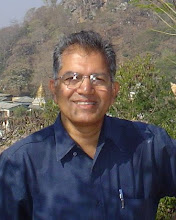The third day of the McShane Workshop began with an attempt to image global economics along the lines of global hydrodynamics. In 1897 we had Howard Lace's 800 page book on hydrostatics, which remained in use for over half a century. In 1997 we had Lighthill's four volumes of a 1000 pages each on the history of hydrodynamics. Perhaps in 2097 we will have a book on global economics, Phil suggested.
The next two sessions were dedicated mostly to questions: about the mechanism of price rises when there is excess money and the quantity of consumer goods remains static; the 'idealism' of Lonergan's exclusion of centralist controls and expectations that the economy will one day be controlled by the good sense of people, given that there will be a culture in which his 'diagram' has become a molecular image, something that people carry in their bones; the role of politics (no role, Phil answered, just as today politicians would never dare to pontificate on hydrodynamics); the role of religion (great role in shaping the hope of a fair and just society); the role of the common man and woman (tree-hugging; making a noise; spreading the word; nudging economists or friends of economists).
In the concluding session, Ms Dakshayani, Denver D'Silva (a student) and I shared our impressions of the workshop, while Fr Savio D'Souza, the Rector, proposed a vote of thanks.
Ms Dakshayani, who is a graduate of Jawarharlal Nehru University Delhi, and has a research degree from the Tata Institute of Social Sciences, Mumbai, and is now a researcher at Shelter Don Bosco R&D, questioned the idea that the Indian economy was static; it was quite dynamic, she noted. (Perhaps this was not quite what Phil had been saying. What he said was that Lonergan was moving economics from being a static theory to a dynamic one.) She also asked how Lonergan's theory differed from the classical capitalist laissez-faire. Again, she asked for a fuller understanding of leisure; this was important, especially in a context where unemployment was a major problem. Finally, she said that the idea of promise presented during the talks was too individualistic. In the Indian context, one would have to talk about commitment, duty, responsibility, as, for example, in the joint family. Promise, she said, cannot be reduced to a business term. The cultural context must be taken into account.
I myself noted that this was the very first time that Divyadaan had taken up economics as a topic for discussion; it went very well with the suggestion of the 26th General Chapter of the Salesians that the vow of poverty included an educative dimension: enabling youth, especially those on the margins, to take their rightful place in society and in the transformation of society. Secondly, the connections that had been made with KTHM College, St Xavier's Mumbai, the local press, and Shelter Don Bosco R&D were precious. Thirdly, while Phil had given us a taste of a different type of economics, it was up to us - or some of us at least - to study further, and to make up our minds about it. At the very least, we could become members of SGEME. And then, since the majority of us were going to be teachers and educators, there was the task of being educators who enabled Minding, who allowed Whatting, rather than educators who suppressed Minding and Whatting. (And it had been great to see young students and novices asking excellent questions.) Finally, Lonergan's work is built on faith and hope: faith that understanding the economy correctly is vitally important for sane action, even if we have not quite arrived at that correct understanding; hope that a first step has been taken, and that we are moving in the right direction when we ask: What is happening in the economy?
Subscribe to:
Post Comments (Atom)





No comments:
Post a Comment